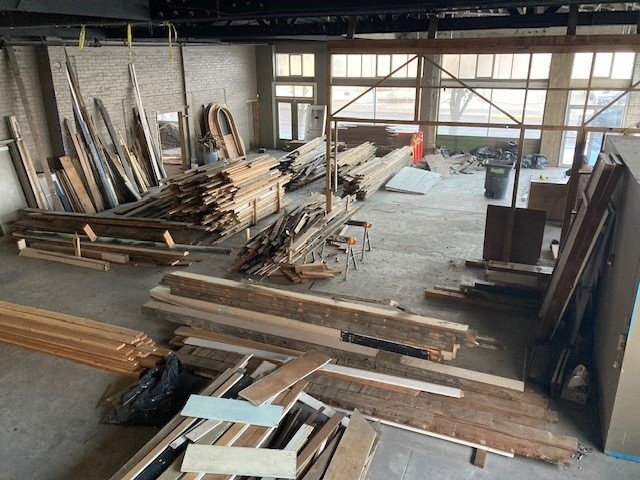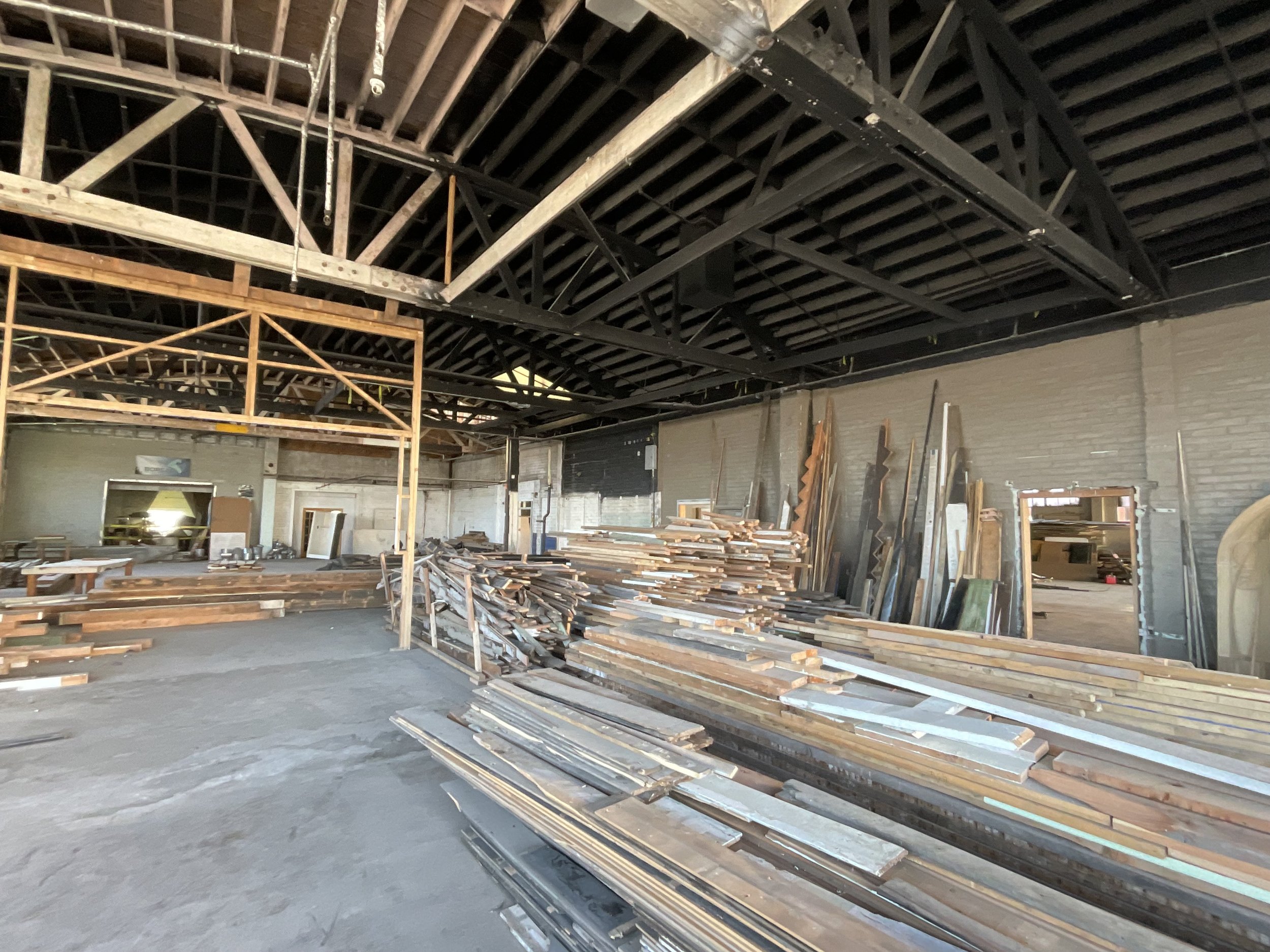Demystifying Deconstruction
Imagine clicking through a folder of photos labeled “deconstruction”. The images show piles of dimensional lumber stacked neatly inside an old commercial linen building. The warehouse walls are partially stripped of their original finishes. Doors lean up against the same walls they were removed from, as if taking a quick power nap before their new job assignment. You see piles of materials that will end up being salvaged and reused in the same building that they were carefully extracted from.
Wood framing that has been salvaged from the building’s interior at Watershed Row.
This overhead view shows the staging of the deconstructed materials
So you may be asking…WHAT is Deconstruction?
Simply put, DECONSTRUCTION is carefully taking apart built construction with the purpose of separating built materials. The end goal of deconstruction typically is the ability to reuse the salvaged materials instead of buying new. Deconstruction is a longer process, with different payouts. It’s more up-front time and labor to remove materials with care, but you safe on the cost of materials and shipment for later.
But how is it different from Demolition?
Demolition is a bull in a china shop. Think of a giant stomping around a village. Care isn’t taken on what is being smashed because it doesn’t need it. The buildings are crushed and all of the materials are crushed along with it, and taken to the landfill. All of those building materials, regardless of their condition, are treated the same and their reuse potential is lost. Demolition is also FAST. Its quick and easy to knock over a building and there isn’t an specialized knowledge required to do so (meaning a team can be assembled quickly since anyone can do it).
As a company committed to sustainability, we are conscious of the fact that the most sustainable move is to reuse what already exists. Adaptive reuse allows for exactly that, diverting construction waste by avoiding the generation of that waste in the first place. Where there are existing walls that need to come down or adjust for new programs, there are materials ripe for salvage.
Each year the EPA releases the “Advancing Sustainable Materials Management: Facts and Figures Fact Sheet” which includes information on waste generation, recycling, composting/other food management and landfilling for that selected year. This shows that:
600 million tons of C&D debris were generated in the United States in 2018, which is more than twice the amount of generated municipal solid waste.
Demolition represents more than 90 percent of total C&D debris generation, while construction represents less than 10 percent.
Just over 455 million tons of C&D debris were directed to next use and just under 145 million tons were sent to landfills.
Aggregate was the main next use for the materials in the C&D debris.
The framing was used in the historical building, some of it dating back to the 1920s
So what have we learned from this process?
Anticipate that there will be a learning curve (with the Design team, Contractor and the Owner) and plan to allocate time for that.
Get the GC onboard as early as possible in the process. If they have the ability to contribute during the documentation phase, it shortens the learning curve time.
Set up a Precon (or pre-decon😉) with all the subs at the beginning of the deconstruction process and state the mission and explain the intended end use. It helps to state the mission clearly for everyone so that there isn’t confusion moving forward what the end goals are.
Allow for flexibility and feedback during the process. Goals change and so do handling procedures. Allow room for the GC to come to you with proposed alternate means of handling…this creates buy-in and more ownership.
Have a storage/sorting plan in mind prior to deconstruction. If your project has a staggered deconstruction and new construction phase, weigh the balance between labor spent by the Contractor to meticulously store the materials on site versus labor spent by the Owner/Design team to make sense of the materials to be reused.
Engage and embrace the community during these efforts! Local community groups are usually extremely eager to find salvaged materials or are willing to buy needed materials.
Don’t let this process be daunting!
Learning new things is sometimes overwhelming, but luckily there are people (like us) and many others to reach out to and ask questions about the process. Some of the helpful information that we found during the process is linked here:
Sustainable Management of Construction and Demolition Materials | US EPA
Encouraging and Mandating Building Deconstruction - USDN Sustainable Consumption Toolkit





